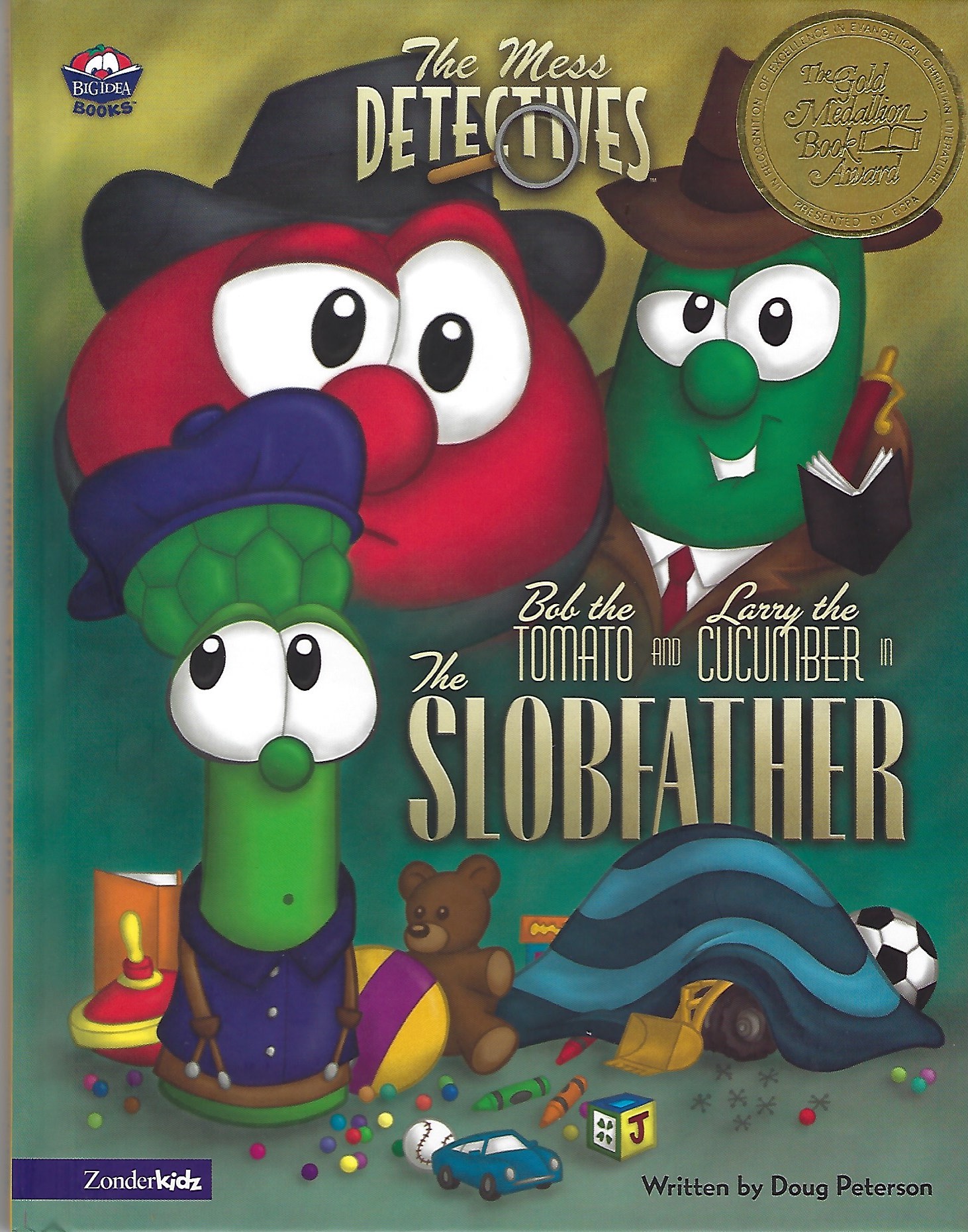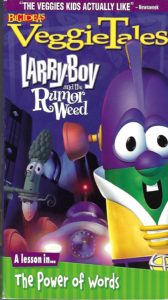The voice on the other end of the line was Bob the Tomato.
It was a Sunday night, and Phil Vischer, the voice of Bob and founder of VeggieTales, was calling to invite me to brainstorm ideas for their next video. If I recall correctly, I had about a week to 10 days to submit ideas for the next Larry-Boy video, so I aimed at submitting at least one per day. I was competing with about a dozen other freelance writers, so I wanted to fire off as many ideas as possible—a shotgun approach.
Little did I know that they would choose the very first idea that I submitted—an idea that became the video, Larry-Boy and the Rumor Weed.
I bring this up because I want to talk about brainstorming—a process that is pretty much the same for me, whether I’m coming up with ideas for books or ideas for a Larry-Boy video. It’s a process that I like to think of as a dance of sorts, especially when it comes to brainstorming for singing vegetables. As the VeggieTales theme song famously says, “If you like to waltz with potatoes…”
My wife and I have taken ballroom dancing a few different times, despite my penchant for stepping on toes. So I can see some similarities between dancing and writing, because there is inevitably going to be some stumbling around in both processes.
When done properly, dancing looks easy and flows seamlessly, but it takes a lot of practice to get to that point, going over the steps again and again and again. In the same way, a good story flow gracefully off the page, but it takes a lot of hard work to get to that point, going over the steps again and again and again.
For me, the first step in the brainstorming process is…
Step 1. Find the rhythm. Get in the mood.
VeggieTales characters have their own rhythm and feel. So when I was writing books for VeggieTales, I would start my brainstorming sessions by getting in touch with my inner vegetable and immersing my entire being (or bean) in the VeggieTales world. I found that the best way to get into a Silly Songs state of mind was to sit down and watch a VeggieTales video or two or three or four. (Writing is such a hard life.)
VeggieTales has a distinctive, quirky sense of humor, so watching the videos would help me find the VeggieTales rhythm.
I have used this same strategy when brainstorming for other types of stories, and it still works. For example, when I used to write a humor column for a Christian magazine, I would start each brainstorming session by sitting down and reading Dave Barry books, just put myself in a very silly state of mind. So whatever genre you’re writing for, read something you like in that genre to get in the mood. However, be careful you don’t wind up imitating the other writer’s style. The purpose of this step is to get in the right frame of mind, not to copy another person’s style.
In the case of VeggieTales, I should note that I did want to consciously imitate their style because, after all, the editors were looking for writers who could match the distinctive feel of a VeggieTales story.
But if you’re writing in your own voice, make sure you keep that voice.
Once I got in the right mood, it was on to…
Step 2: Find a theme.
As any faithful fan knows, each VeggieTales episode centers on a particular value. King George and the Ducky was a lesson about selfishness, Rack, Shack and Benny was a lesson in handling peer pressure, Madame Blueberry was a lesson in thankfulness, and so on.
As I continued to do more writing for VeggieTales (primarily picture books), I created a master list of close to a hundred different themes, from which I regularly drew. My VeggieTales editor usually gave me the freedom to choose a theme, so when I brainstormed an idea, I tried to come up with ideas that matched a half dozen or so different themes.
Once I selected several potential themes, it was on to…
Step 3: Write down any idea that pops in my head.
I then went to work, jotting down any crazy idea that came to mind. But there was still a method to the madness.
When I was asked to brainstorm ideas for the new Larry-Boy video, I knew that Larry-Boy always battled villains that personified various sins. For instance, the villain in the first Larry-Boy episode was the Fib from Outer Space—a monster that grew and grew, just as lies do. Therefore, I made a list of different sins, and one of them was “spreading rumors.” I then latched onto the key word “spreading” and asked myself, “What are other things that spread?”
I began to jot down ideas, anything that popped into my head. One of the words I wrote down was “fire” because fire spreads, but that seemed too violent for a VeggieTales story. Pimples spread, but that was too gross. Viruses spread, but that seemed too difficult to visualize. And then I found it. I wrote down the word “weeds” because there’s nothing peskier than weeds that take over your field or lawn.
The result was the Rumor Weed, a weed creature that spreads all across town, spreading rumors about Larry-Boy’s butler, Alfred.
Brainstorming was typically the most difficult part of the process, because once I had a good idea, writing a 1,000-word children’s book was a piece of cake in comparison.
In sum, brainstorming can be tough, but my process was quite simple: (1) Get into the rhythm or the right mood; (2) select a theme; and (3) jot down whatever comes to mind.
I continue to use this process for whatever kind of writing I’m doing, which lately has been historical novels. However, instead of waltzing with potatoes, these days I’m doing the foxtrot with Abraham Lincoln and other historical figures.
But either way, the dance goes on.
* * *
5 for Writing
- Get writing. Find the time to write. Then do it.
- Learn by listening—and doing. Solicit feedback, discern what helps you.
- Finish your story. Edit and rewrite, but don’t tinker forever. Reach the finish line.
- Thrive on rejection. Get your story out there. Be fearless. Accept rejection.
- Become a juggler. After one story is finished, be ready to start another. Consider writing two at once.






 We love helping your growing in your writing career.
We love helping your growing in your writing career.

4 Comments
I never associated getting in the mood with brainstorming before. I will have to try it.
I hope it works for you, Lisa.
I love the idea to read the genre of writing you’re about to tackle before beginning a brainstorming session. First, it delays the pain of brainstorming a little longer and replaces it with a fun activity, plus, it makes complete sense. Thanks for these great tips.
You’re right about replacing the pain of brainstorming with a fun activity. Sometimes, I would have to force myself to switch over from “getting in the mood” to brainstorming ideas. Thanks!